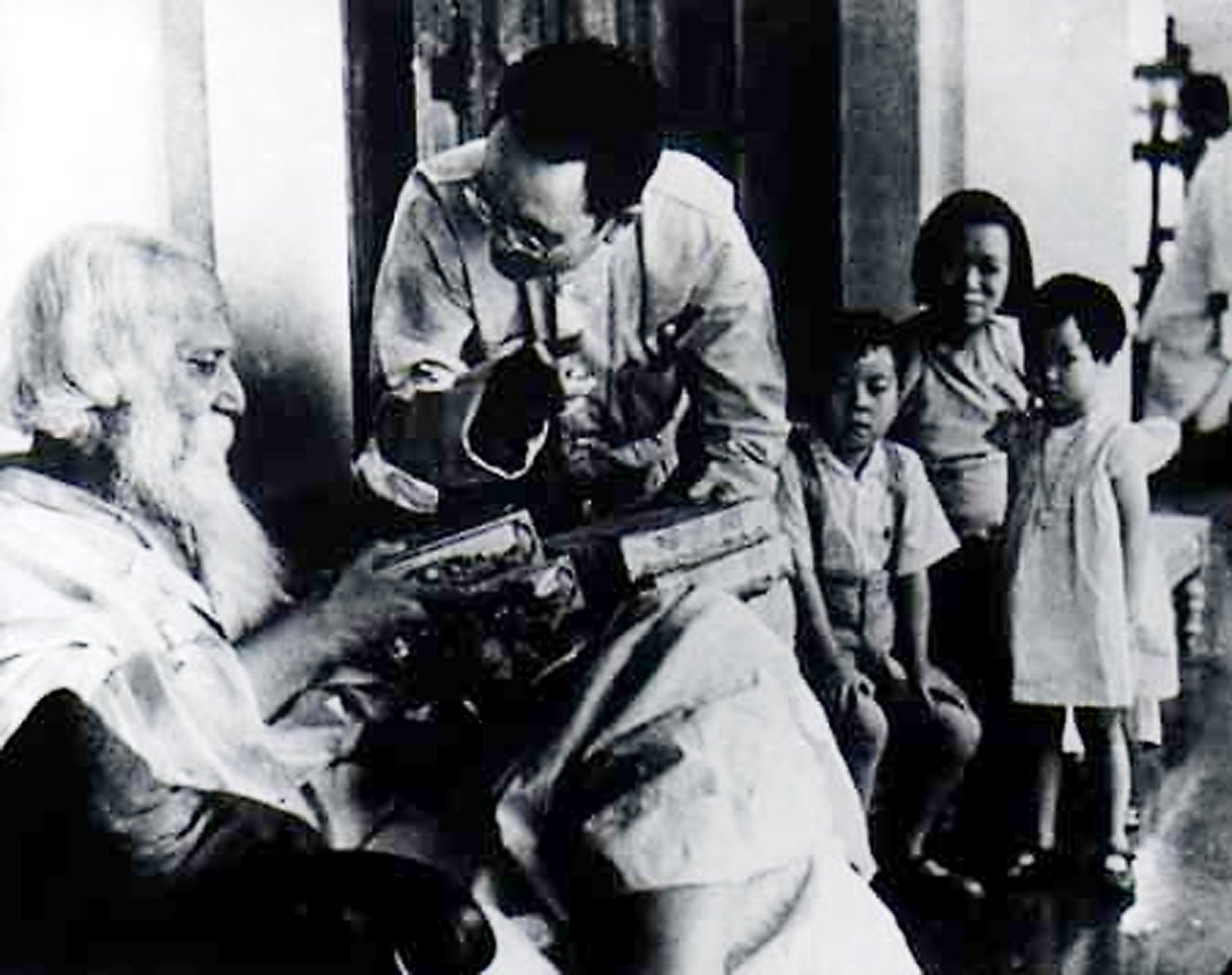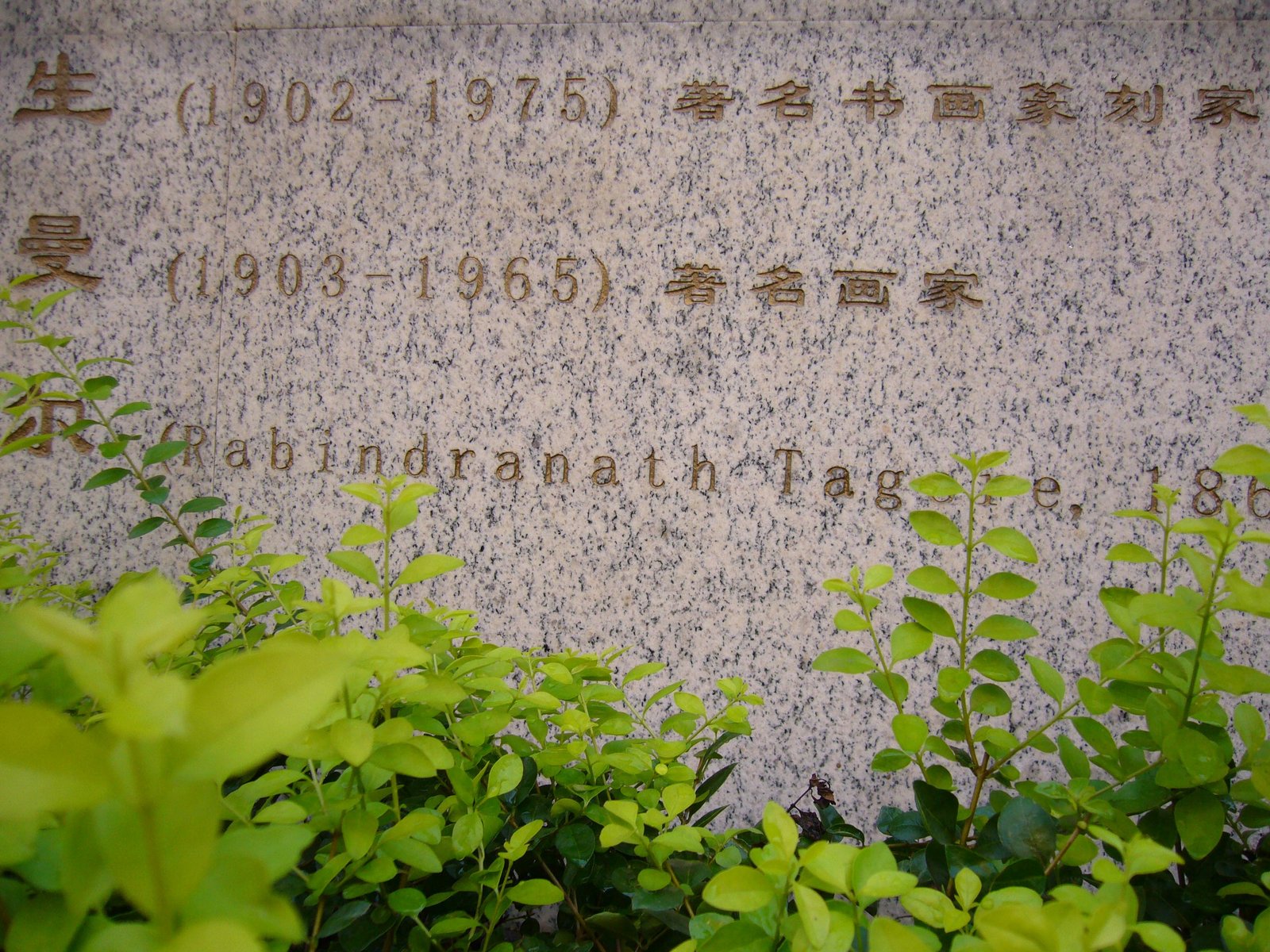An exclusive Interview with Bivash Mukherjee; who re-discovered Tagore’s links with China.
A stroll below the under belly of Shanghai’s busy Yan’an Road one cool evening about twelve years ago led Bivash Mukherjee, the man behind Gurudev: a Journey to the East, a highly informative documentary on Tagore’s lifelong bond with China, to a delightful discovery that culturally connects China and India a century ago. In an exclusive interview with Inchin Closer, ten years ago, Mukherjee delves into the life, times and influence that Asia’s first Nobel Laureate had over Chinese society at the time.
Mukherjee’s discovery brought to light another close bond that India and China shared, that most even today know little about. We all hear about the tea and opium trades however, Tagore’s rich influence on Chinese society which continues until today, led past Indian President Pratibha Patil to inaugurate a bust of Rabindranath Tagore in Shanghai in 2010. Commemorating almost a century of influence that Indian literature, modern thoughts and a dream of a Pan-Asia that the Bengali Bard had on Chinese people.

Inchin Closer: Tagore is the most translated foreign poet after Shakespeare in China today. He continues to inspire modern Chinese. How did Tagore’s writings culturally affect Chinese society then and now?
Mukherjee: Tagore first arrived in China in the summer of 1924. That was an official trip following an invitation from Liang Qichao, a reformist and a Confucian scholar at that time, who headed the Beijing Lecture Association. But the visit also happened during one of the most turbulent times in China. The May Fourth Movement that began in 1919 was at its peak with regular debates on East vs. West; modernism against tradition. It was a conflict — violent at times — with students and intellectuals leading the way that to some extent shaped the history of modern China.
The ensuing clash of ideas and cataclysm marked the beginning of the emergence of the Chinese Communist Party.
Tagore was perceived by good many intellectuals as an opponent of modernism (read Westernization) and supporter of traditional values and culture and ran into opposition during his trip. We know now that was far from true.
Tagore was widely traveled man and saw the best and worst of both the worlds. His Pan-Asian view incorporated the best of the west, but the ethos was largely Asian. Not just India, China or Japan but a united Asia, which he felt could stand up to the dictates of the dominant Europeans of the time.
Tagore’s trip was the classic case of, as a Chinese professor told me, being at the wrong place, at the wrong time. That he is still read, discussed and admired, despite the hostility of his trip, says volumes about how influential Tagore has been in modern China. I was also told that his books made the rounds during the Cultural Revolution, offering some semblance of hope during those troubled times.
Tagore’s arrival in China also gave an impetus to the new wave poetry/writings that was in its infancy then. Everybody needs an inspiration and Tagore’s visit provided just the spark. Xu Zhimo is among the writers who are closely associated with Tagore. Then there is Xie Bingxin as well. Her writings in fact covered an era – from the 1920s to the 1990s.

Inchin Closer: Does Tagore continue to influence Chinese society and literature even today? What does the modern Chinese think of the Bengali Bard that wrote India’s national anthem?
Mukherjee: In the most recent times, I can think of Zhao Lihong, who is now the vice president of the Shanghai Writers Association. He has openly spoken about Tagore’s influence in his writings.
I hear now that a new generation of translators is working to bring out his complete works in 28 volumes. While his previous works have been translated from English and Hindi, this time they are working from the original – in Bengali.
So, from 1915 or 1916 when he was first translated in Chinese to the present 2010 and beyond – that’s quite a span, isn’t it?
Besides books and articles, it is heartening to see Tagore being quoted freely on Chinese blogs and internet forums here. They are essentially the young crowd and much of the blogging has to do with matters of the heart or those with a spiritual bent of mind. Many of them also write/discuss on the controversy of his visit. I read one of the blogs – again someone in the late twenties – who wrote that “it had to be a foreigner telling us to preserve our culture against European dominance while we fought each other…”
I think also much of the influence has got to do with his Asian-ness. His love for all things natural, child-like, spiritualism … they could easily identify with him. So, yes, he did held sway over them and continues to…
Inchin Closer: The idea of a Pan-Asian culture is something that is seeing renaissance today, one where a collective Asia rises from the ashes of her past, kind of like a modern day economic phoenix. How did Tagore see it then and what parallels can we draw to modern times?
Mukherjee: The doctrine was simple: Asia for Asians. A pan-Asian mainland that was free of western influence. Tagore had declared that Asia must find its voice. It was based on a vague concept of universal humanity while championing the ideals of the east. While the idea was quick to catch on, it was fraught with divergent views. The common binding concept was to oppose western hegemony and build an Asian synergy. But Tagore with his Brahmo Samaj views, China with its Confucian traditions and Japan with its military might were least likely to find a common ground. It was an idealized conception that was doomed for failure.
Worse, who was to lead it at all? While Pan-Asianism had a tinge of spiritual and religious spirit in India, Japan assumed it to be its military might particularly after its victory over Russia in the Russo-Japanese war. Also, Japan’s expansionist policies in Asia had brutalized China and Korea and Tagore was clearly disenchanted by it.
But come to think of it, the Pan-Asian concept was probably not entirely utopian. If the success stories of modern-day ASEAN, AFTA and other trade blocks are to be seen, it has clearly worked to propagate the ideas of regionalism. The idea was regional development and it seems to be working now.

Inchin Closer: What was the Crescent Moon Society and how did it influence China?
Mukherjee: It was the Cambridge-educated Xu Zhimo and his literary circle of friends who formed a casual dinner and discussion salon named after Tagore’s book of prose poems The Crescent Moon. Members generally paid five yuan a month that allowed them to eat, drink, read, meet, discuss or just play pool.
Xu penned some of his thoughts in a poem which opens with the line, “There are times when our little courtyard ripples with infinite tenderness.”
Xu lived quiet a colorful life. He finished his early education at Peking University and traveled to the United States for further studies. Finding the US “intolerable,” he moved to Cambridge University in England in 1920, which is where he “fell in love” with English romantic poetry of Keats and Shelley. It was also here in England that he discovered Tagore for the first time and sought common grounds later on with other Asian writers.
Xu returned to China in 1922 and introduced the “new wave” modern poetry that fused western elements of romance into classical Chinese poetry. Xu, who was the official translator for Tagore during his trip to China, took quiet a bit of flak from contemporary thinkers for his dominant theme of love, beauty, energy and his contempt for conventional morality.
Tagore stayed at Xu’s house twice in Siming Village in Shanghai. That house no longer exists but there is a plaque on the wall that makes special mention of Tagore and Xu and other celebrities who once lived there.
His death at the young age of 36 in 1931 in a plane crash – he had printed accounts earlier of his love for “Flying” — stumped the development of modern Chinese poetry.
Professor Tan Chung, who was bought to Santiniketan by Tagore to establish the Cheena Bhavan, said that Xu’s death “cut short a career of great poetic talent. If he had lived as long as many of his contemporaries had lived, his role in the history of modern Chinese literature would have been greater than what is known. So also: Tagore’s influence on China’s new poetry would have been more pronounced than what is known.”
In Xu Zhimo, Tan writes, there was a mini-version of Tagore. “Rich, talented, romantic, exposed to progressive ideas but not plunging into the political activities. Not unlike Tagore in his young days, Xu Zhimo had tender feelings for fellow-beings, was inclined towards the charm of nature, but knew how to make the best in material life. He was a potential Chinese Tagore being wiped out in his formative stage by ill fortune.”
This is a reprint of the interview Inchin Closer conducted with Bivash Mukherjee in 2010.
